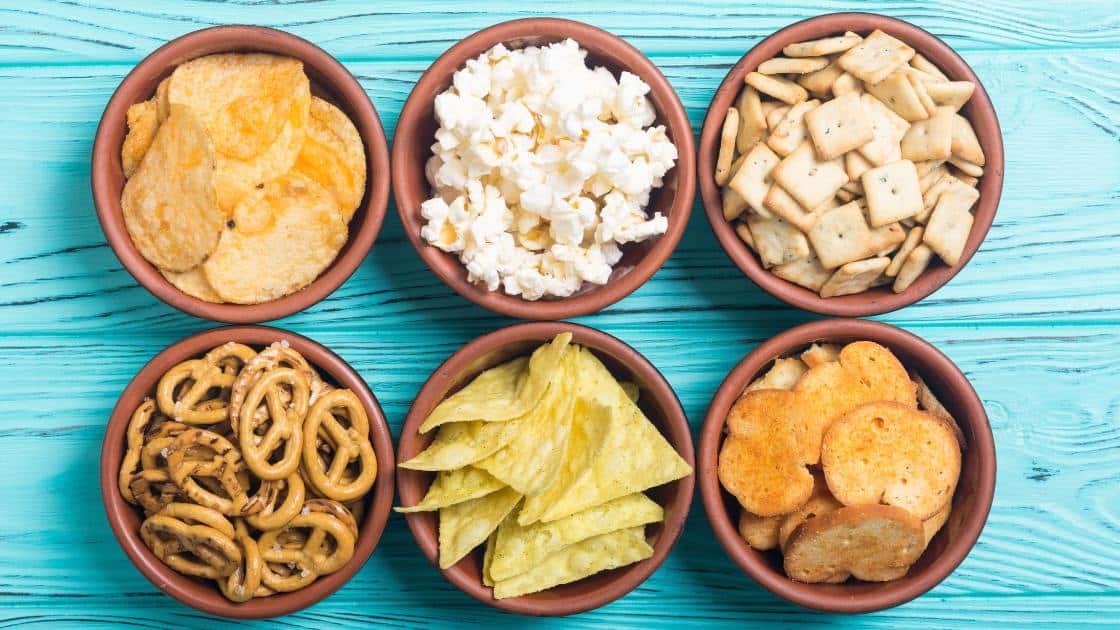

As part of our commitment to Earth via our Laudato Si’ Action Plan, we are inviting everyone who shares in our charism to take a monthly Eco-Challenge with us.
Reduce your reliance on plastic packaging
Plastic packaging used for snacks contributes significantly to pollution. Most snack packaging is single-use, meaning it’s disposed of after a single serving and usually goes straight to a landfill. It’s usually made of non-biodegradable material such as polyethylene terephthalate (PET) and polypropylene. They can persist in the environment for hundreds of years, accumulating in landfills, oceans and ecosystems. Over time, plastic packaging breaks down into smaller pieces known as microplastics, seriously threatening the entire ecosystem.
Addressing the pollution caused by single-use plastic packaging requires a multifaceted approach, including reducing plastic consumption, improving recycling infrastructure, promoting alternative materials, and encouraging responsible disposal practices.
Making your own snacks and packing them in your own non-plastic containers is one small step you can take to reduce your consumption of plastic.
Benefits of making your own snacks
Homemade snacks offer several benefits compared to store-bought options:
Healthier Ingredients
When you make snacks at home, you have control over the ingredients, allowing you to choose healthier options like whole grains, fresh fruits and vegetables, and lean proteins. You can also reduce or eliminate unhealthy additives like preservatives, artificial flavors and excessive sugar or salt.
Customization
Homemade snacks can be customized to your taste preferences and dietary needs. Whether you’re following a specific diet (like gluten-free or vegan) or just prefer certain flavors, you can tailor your snacks accordingly.
Cost Savings
Making snacks at home can be more cost-effective than buying pre-packaged ones, especially if you buy ingredients in bulk or on sale. Plus, you can avoid the markup that often comes with convenience packaging.
Portion Control
When you make snacks at home, you can control portion sizes, helping you avoid overeating. Pre-packaged snacks often come in large servings, which can lead to mindless munching and consuming more calories than you need.
Freshness
Homemade snacks are often fresher than store-bought ones, since you prepare them yourself using fresh ingredients. This can enhance the flavor and nutritional value of the snacks.
Reduced Waste
Making snacks at home can help reduce packaging waste, as you can store them in reusable containers rather than single-use packaging. This is not only better for the environment but also for your wallet.
Overall, homemade snacks offer a healthier, more customizable, and often more economical alternative to store-bought options. Plus, they can be a fun and rewarding way to experiment in the kitchen!
Snack ideas
With these snacks on hand, you’ll always have something tasty and satisfying to munch on!
Trail Mix
Combine nuts, dried fruits and maybe some chocolate chips for a classic snack perfect for on-the-go.
Popcorn
Whether air-popped or stovetop, popcorn is a versatile snack. You can keep it simple with just salt and butter or get creative with seasonings like garlic powder, nutritional yeast or cinnamon sugar.
Homemade Granola Bars
Whip up a batch of homemade granola bars using oats, honey or maple syrup, nuts, seeds and dried fruits. You can customize them to your taste, and they’re great for snacking or breakfast on the run.
Vegetable Chips
Slice up some vegetables like sweet potatoes, beets or kale, toss them with a bit of olive oil and seasoning, then bake until crispy for a healthy alternative to store-bought chips.
Energy Balls
These no-bake snacks are made with ingredients like oats, nut butter, honey and add-ins like chocolate chips or dried fruit. They’re easy to make and perfect for a quick energy boost.
Take the Eco-Challenge
- Look for your favorite snack in options that come in bulk or with the least amount of plastic packaging.
- Try out a recipe for a homemade version of a snack food, using ingredients that come in the least amount of plastic packaging possible.
- Seek out plastic-free options for packing your snacks like reusable beeswax wraps, silicone snack bags and glass containers (see our Recommended Sustainable Products List for some ideas). Or better yet, be on the lookout for containers you can reuse or thrift for this purpose.
Spread the word
- Leave a comment about how you’re taking the challenge below.
- Invite others to take the May Eco-Challenge by sharing our post on Facebook and/or Instagram.
I especially like the portion control and the fact that I can “spice it up” exactly as I want to.
When i have time I make snack bars, but most often I simply keep some nuts around for a quick healthy snack.
I have had the practice bringing my own snacks and lunch. These suggestions give me more ideas
I recycle a small plastic bag numerous times.
Thank you for reminding us of many possibilities.
I packed cut up carrots rather than baby ones that come in plastics. I also made brownies and froze them as individual servings.
I do use different kinds of “bars” that are gluten free. I also use nuts and dried fruit which I put in reusable plastic bags.
I have purchased a “Plastic waste” Terracycle box and keep it in my pantry. This allows me to recycle the wrappings from bars.